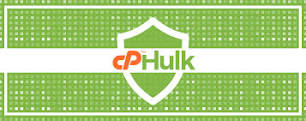
cPHulk, an integral part of the cPanel and WHM ecosystem, is a powerful security feature designed to thwart brute force attacks and enhance the overall resilience of web hosting servers. Let's delve into the key aspects of cPHulk and understand how it contributes to bolstering the security posture of servers.
Brute Force Attacks: A Persistent Threat
Brute force attacks involve malicious actors attempting to gain unauthorized access to a system by systematically trying all possible combinations of usernames and passwords. These attacks are relentless and pose a significant risk to server security. Recognizing this threat, cPHulk steps in as a robust defense mechanism.
A- Key Features of cPHulk
1. Login Tracking:
cPHulk meticulously tracks login attempts, monitoring both successful and unsuccessful logins. This comprehensive tracking mechanism provides administrators with valuable insights into potentially malicious activities.
2. IP Blocking:
When cPHulk detects a suspicious number of failed login attempts from a specific IP address, it takes proactive measures by automatically blocking that IP. This swift response helps prevent further unauthorized access attempts.
3. Adaptive Learning:
cPHulk incorporates adaptive learning, dynamically adjusting its thresholds based on historical data. This means it can adapt to changing patterns of login attempts, continually optimizing its ability to identify and mitigate threats.
4. Whitelisting and Blacklisting:
Administrators have the flexibility to whitelist trusted IP addresses, ensuring that legitimate users are not inadvertently blocked. Conversely, they can also manually blacklist specific IPs to prevent access from known malicious sources.
5. Notification Alerts:
To keep administrators informed, cPHulk can be configured to send email notifications when certain thresholds are reached or when significant security events occur. This proactive alerting empowers administrators to respond swiftly to potential security incidents.
B-Implementation and Configuration:**
Enabling cPHulk is a straightforward process within the cPanel and WHM interfaces. Administrators can fine-tune settings, adjusting parameters like login failure thresholds, block durations, and notification preferences. These configurations allow for a tailored approach to security based on the specific needs and risk tolerance of the server.
C- Best Practices with cPHulk
1. Regular Monitoring:
Periodic review of cPHulk logs and reports is crucial for staying informed about login activities and potential threats. This proactive monitoring enables timely responses to emerging security issues.
2. Collaboration with Other Security Measures:
While cPHulk provides formidable protection against brute force attacks, it is advisable to complement it with other security layers, such as strong password policies, two-factor authentication, and regular security audits.
3. Documentation and Training:
Ensuring that server administrators are well-versed in cPHulk's functionalities and best practices enhances the effectiveness of this security feature. Regular training sessions and documentation updates contribute to a well-prepared and vigilant security team.
Conclusion
cPHulk stands as a stalwart guardian against brute force attacks, reinforcing the security infrastructure of cPanel and WHM servers. Its adaptive nature, coupled with configurable settings, empowers administrators to strike a balance between robust protection and user convenience. By leveraging cPHulk in tandem with other security measures, server administrators can create a resilient defense against the persistent threat of unauthorized access attempts.








